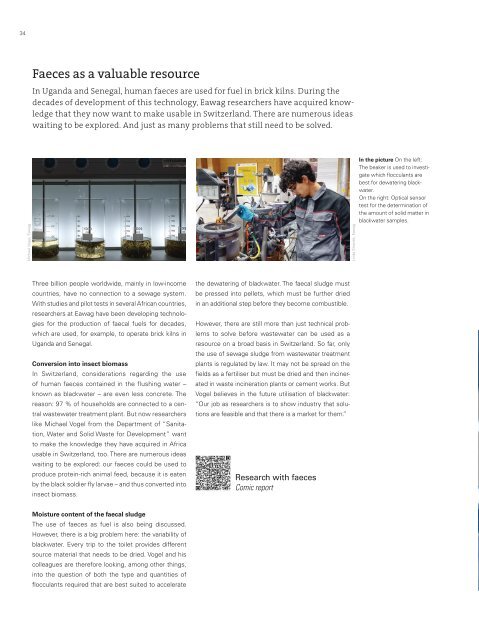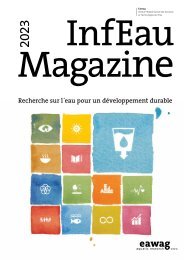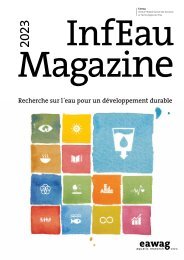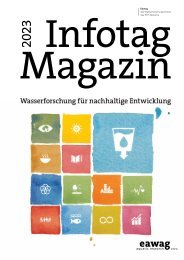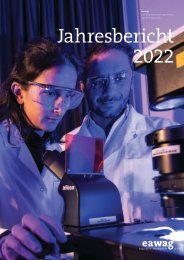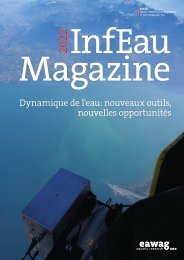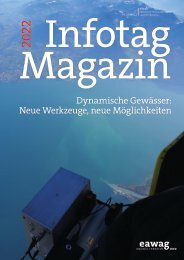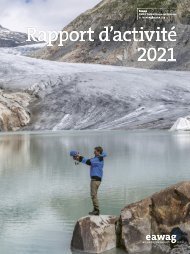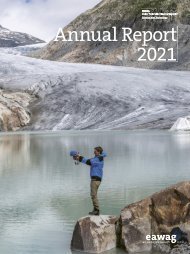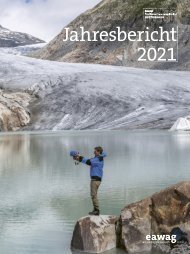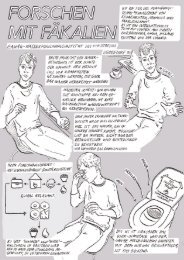Eawag Annual Report 2022
As the aquatic research institute of the ETH Domain, our research is in service of society. You can see this for yourself in our Annual Report. The annual compact review highlights the most relevant research results of the past year and shows how they were developed.
As the aquatic research institute of the ETH Domain, our research is in service of society. You can see this for yourself in our Annual Report. The annual compact review highlights the most relevant research results of the past year and shows how they were developed.
Create successful ePaper yourself
Turn your PDF publications into a flip-book with our unique Google optimized e-Paper software.
34<br />
Faeces as a valuable resource<br />
In Uganda and Senegal, human faeces are used for fuel in brick kilns. During the<br />
decades of development of this technology, <strong>Eawag</strong> researchers have acquired knowledge<br />
that they now want to make usable in Switzerland. There are numerous ideas<br />
waiting to be explored. And just as many problems that still need to be solved.<br />
Michael Vogel, <strong>Eawag</strong><br />
Linda Strande, <strong>Eawag</strong><br />
In the picture On the left:<br />
The beaker is used to investigate<br />
which flocculants are<br />
best for dewatering blackwater.<br />
On the right: Optical sensor<br />
test for the determination of<br />
the amount of solid matter in<br />
blackwater samples.<br />
Three billion people worldwide, mainly in low-income<br />
countries, have no connection to a sewage system.<br />
With studies and pilot tests in several African countries,<br />
researchers at <strong>Eawag</strong> have been developing technologies<br />
for the production of faecal fuels for decades,<br />
which are used, for example, to operate brick kilns in<br />
Uganda and Senegal.<br />
Conversion into insect biomass<br />
In Switzerland, considerations regarding the use<br />
of human faeces contained in the flushing water –<br />
known as blackwater – are even less concrete. The<br />
reason: 97 % of households are connected to a central<br />
wastewater treatment plant. But now researchers<br />
like Michael Vogel from the Department of “Sanitation,<br />
Water and Solid Waste for Development” want<br />
to make the knowledge they have acquired in Africa<br />
usable in Switzerland, too. There are numerous ideas<br />
waiting to be explored: our faeces could be used to<br />
produce protein-rich animal feed, because it is eaten<br />
by the black soldier fly larvae – and thus converted into<br />
insect biomass.<br />
the dewatering of blackwater. The faecal sludge must<br />
be pressed into pellets, which must be further dried<br />
in an additional step before they become combustible.<br />
However, there are still more than just technical problems<br />
to solve before wastewater can be used as a<br />
resource on a broad basis in Switzerland. So far, only<br />
the use of sewage sludge from wastewater treatment<br />
plants is regulated by law. It may not be spread on the<br />
fields as a fertiliser but must be dried and then incinerated<br />
in waste incineration plants or cement works. But<br />
Vogel believes in the future utilisation of blackwater:<br />
“Our job as researchers is to show industry that solutions<br />
are feasible and that there is a market for them.”<br />
Research with faeces<br />
Comic report<br />
Moisture content of the faecal sludge<br />
The use of faeces as fuel is also being discussed.<br />
However, there is a big problem here: the variability of<br />
blackwater. Every trip to the toilet provides different<br />
source material that needs to be dried. Vogel and his<br />
colleagues are therefore looking, among other things,<br />
into the question of both the type and quantities of<br />
flocculants required that are best suited to accelerate


